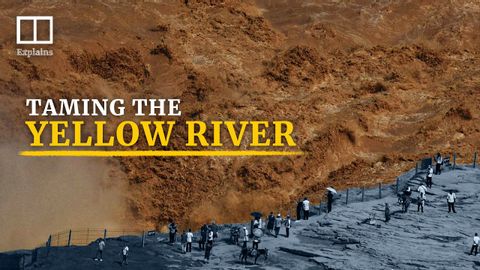中國的黃河:馴服中華文明的搖籃 (China’s Yellow River: Taming the cradle of Chinese civilisation)
 沒有此條件下的單字
沒有此條件下的單字US /ˈkɑnˌtɛnt/
・
UK /'kɒntent/
- adj.滿足的;滿意的
- n. (c./u.)內容;主題;內容;滿意;內容 (數位);含量
- v.t.使…滿足
- v.i.同意
US /trɪˈmɛndəs/
・
UK /trəˈmendəs/
- n. (c./u.)條件;條款;期間;期限;學期;術語;關係;項;妊娠期;任期
- v.t.命名
US /ɪmˈpruv/
・
UK /ɪm'pru:v/
